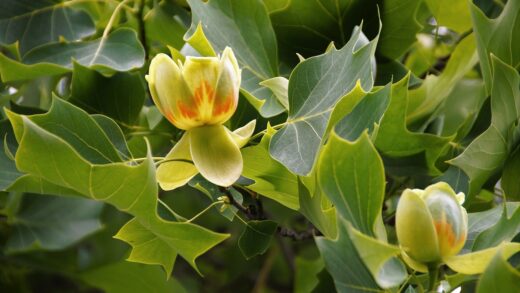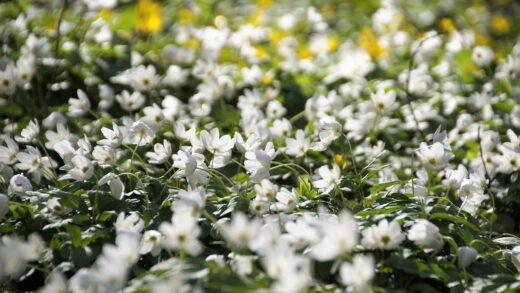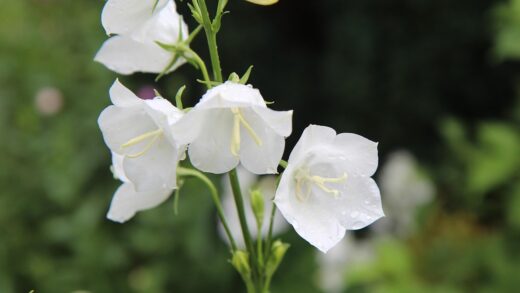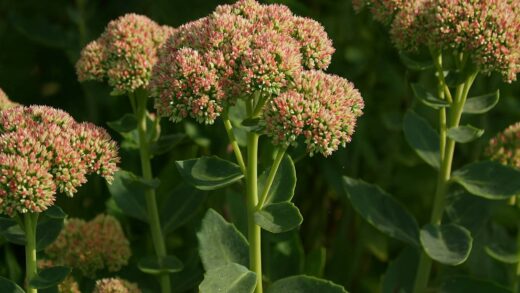Even the most well-cared-for brazilian jasmine can occasionally fall victim to a range of diseases and pests. While this beautiful vine is generally quite resilient, being aware of the potential threats is the first and most critical step in maintaining a healthy, thriving plant. Proactive monitoring and early detection are a gardener’s best defense, as most problems are far easier to manage when caught in their initial stages. From tiny sap-sucking insects that can quickly multiply to fungal diseases that thrive in certain environmental conditions, these issues can detract from the plant’s beauty and, if left unchecked, can cause significant damage or even mortality. Understanding what to look for and how to respond effectively is a key aspect of responsible and successful plant husbandry.
The most common adversaries of the Mandevilla are often small sap-sucking insects that use their piercing mouthparts to feed on the nutrient-rich fluids within the plant’s stems and leaves. Aphids are a frequent culprit, often found clustered on new growth and flower buds, causing distortion and secreting a sticky substance known as honeydew. Similarly, spider mites, which are technically arachnids, are another prevalent pest, especially in hot, dry conditions. These tiny pests are difficult to see with the naked eye, but their presence is often revealed by fine webbing on the undersides of leaves and a stippled, speckled appearance on the leaf surface.
Other common pests to watch out for include mealybugs and scale insects. Mealybugs appear as small, white, cottony masses, typically found in the protected areas where leaves join the stem. Scale insects are more subtle, appearing as small, immobile bumps on the stems and undersides of leaves, protected by a hard, waxy covering. Both of these pests also feed on plant sap, and like aphids, they excrete honeydew, which not only makes the plant sticky but can also lead to the growth of sooty mold, a black fungus that grows on the honeydew, further stressing the plant by blocking sunlight.
Whiteflies are another common nuisance, especially for plants grown in greenhouses or in sheltered outdoor locations. These tiny, moth-like insects will fly up in a cloud when the plant is disturbed and, like the others, they feed on plant sap from the undersides of the leaves. A heavy infestation can quickly weaken the plant, causing leaves to turn yellow and drop prematurely. Regular inspection of your plants, paying close attention to the undersides of leaves and the junctions of stems, is crucial for catching these pests before their populations explode and become much more difficult to control.
The key to managing these pests effectively often lies in a strategy known as Integrated Pest Management (IPM). This approach emphasizes prevention and the use of the least toxic control methods first. This includes encouraging natural predators, maintaining good plant hygiene, and using physical controls before resorting to chemical pesticides. A strong, healthy plant is always the best defense, as vigorous specimens are less susceptible to attack than those that are stressed by poor growing conditions such as improper watering or nutrient deficiencies. Therefore, providing optimal care is the foundation of any successful pest management program.
More articles on this topic
Common fungal and bacterial diseases
Beyond insect pests, brazilian jasmine can also be susceptible to several fungal diseases, particularly when environmental conditions are favorable for their development. Powdery mildew is one of the most easily recognizable of these diseases. It appears as a white, powdery coating on the surfaces of leaves, stems, and sometimes flowers. This fungus thrives in conditions of high humidity and poor air circulation and, while it rarely kills the plant, it is unsightly and can weaken it by interfering with photosynthesis, leading to leaf yellowing and distortion.
Root rot is arguably the most serious and deadly disease that can affect a Mandevilla, and it is almost always caused by overwatering and poorly draining soil. This condition is caused by various soil-borne fungi, such as Phytophthora and Pythium, which attack the plant’s roots in anaerobic, waterlogged conditions. The roots turn brown and mushy, losing their ability to absorb water and nutrients. Above ground, the plant will often show signs of wilting, yellowing leaves, and a general failure to thrive, ironically appearing as if it is underwatered. By the time these symptoms are obvious, the damage to the root system is often extensive and difficult to reverse.
Botrytis blight, also known as gray mold, is another fungal disease that can affect brazilian jasmine, especially during cool, damp weather. It typically attacks the flowers, causing them to develop brown spots and a fuzzy, grayish-brown mold, leading to them rotting and dropping prematurely. It can also affect buds and stems, causing them to turn brown and die back. This disease is particularly problematic on spent blooms that are not removed from the plant, as they provide an ideal site for the fungus to establish itself before spreading to healthy tissue.
Leaf spot diseases, caused by a variety of fungi or bacteria, can also occur. These manifest as distinct spots or blotches on the leaves, which may be brown, black, or tan, and sometimes have a yellow halo around the edge. While minor leaf spot infections are usually just a cosmetic issue, severe cases can lead to significant defoliation, which weakens the plant. The pathogens that cause leaf spot often spread via water splashing from infected leaves to healthy ones, highlighting the importance of watering the soil at the base of the plant rather than spraying the foliage from overhead.
More articles on this topic
Prevention as the best defense
The most effective strategy for dealing with diseases and pests is to prevent them from becoming established in the first place. This proactive approach begins with providing the plant with its ideal growing conditions to ensure it is as healthy and vigorous as possible. A strong plant is inherently more resistant to attack. This includes ensuring it receives adequate sunlight, is planted in well-draining soil, and is watered and fertilized appropriately. Avoiding any form of plant stress is the foundational principle of disease and pest prevention.
Good sanitation and cultural practices are also critically important. This involves keeping the area around the plant clean and free of fallen leaves and debris, which can harbor fungal spores and pests. Regularly removing any yellowing or dead leaves from the plant itself also helps. When pruning your Mandevilla, always use clean, sharp tools. Wiping the blades with alcohol or a disinfectant between cuts, especially if you are moving between different plants, can prevent the accidental spread of diseases from one plant to another.
Ensuring good air circulation is another key preventative measure, particularly for fungal diseases like powdery mildew that thrive in stagnant air. When planting, allow for adequate spacing between plants to avoid overcrowding. For vining plants like Mandevilla, training them onto a trellis or support not only looks attractive but also serves the practical purpose of lifting the foliage and allowing air to move freely through the canopy. This helps to keep the leaves dry and creates a less hospitable environment for fungal pathogens.
Finally, when you acquire a new plant, it is always a wise practice to quarantine it for a few weeks before introducing it to the rest of your collection. This isolation period allows you to observe the new plant closely for any signs of pests or diseases that may not have been apparent at the time of purchase. This simple step can prevent the introduction of a new problem that could potentially spread to your other healthy plants, saving you a great deal of trouble in the long run.
Organic and chemical control methods
When preventative measures are not enough and an infestation or infection does occur, there are several methods of control available. For many common pests like aphids, spider mites, and mealybugs, the first line of defense should be physical or mechanical removal. A strong jet of water from a hose can be surprisingly effective at dislodging many of these pests from the plant. For smaller infestations, you can use a cotton swab dipped in rubbing alcohol to directly remove individual mealybugs or scale insects.
If the problem persists, insecticidal soaps and horticultural oils, such as neem oil, are excellent, less-toxic options. Insecticidal soaps work by disrupting the outer cell membranes of soft-bodied insects, while horticultural oils work by smothering them. Neem oil has the added benefit of being a fungicide and also acts as a repellent and growth regulator. These products are most effective when applied thoroughly, ensuring complete coverage of the plant, especially the undersides of the leaves where many pests congregate. They generally have a low impact on beneficial insects and the environment, but multiple applications may be necessary.
For fungal diseases like powdery mildew or leaf spot, fungicidal treatments may be required. Again, it is best to start with the least toxic options. Fungicides based on sulfur, copper, or potassium bicarbonate can be effective, as can horticultural oils like neem oil. For these treatments to be successful, they must be applied as soon as the first signs of disease are noticed. They work primarily as a protectant, preventing the fungal spores from germinating and spreading, so they are much less effective on a well-established infection.
In cases of severe and persistent infestations or diseases, it may be necessary to resort to stronger, synthetic chemical pesticides or fungicides. If you choose this route, it is crucial to read and follow the label instructions exactly. Ensure that the product is rated for use on Mandevilla and is targeted specifically at the pest or disease you are trying to control. Always apply these chemicals responsibly, using appropriate personal protective equipment and taking care to minimize drift and any potential harm to beneficial insects, such as bees and other pollinators, by spraying in the early morning or late evening when they are less active.
Identifying beneficial insects
In the fight against pests, it is crucial to remember that not all insects are enemies. A healthy garden ecosystem is teeming with beneficial insects that act as natural predators, helping to keep pest populations in check without any intervention from the gardener. Learning to identify these allies is important so that you do not inadvertently harm them while trying to control the pests. One of the most well-known beneficial insects is the ladybug, or lady beetle, whose adults and larvae are voracious predators of aphids.
Another valuable garden helper is the lacewing. The adult lacewing is a delicate, green insect with intricate, lacy wings, but it is its larval stage that is the true pest destroyer. Often referred to as ‘aphid lions’, lacewing larvae are alligator-like in appearance and have a huge appetite for aphids, as well as mites, whiteflies, and other small, soft-bodied insects. Creating a garden environment that is welcoming to these predators can significantly reduce your pest problems.
Spiders, while technically not insects, are also incredibly beneficial predators in the garden, catching a wide variety of pest insects in their webs. Similarly, predatory wasps, such as parasitic wasps, are another important ally. These tiny wasps do not sting humans but lay their eggs inside pests like aphids or caterpillars. When the wasp larva hatches, it consumes its host from the inside out. The presence of ‘mummified’ aphid shells, which are swollen, brown, and papery, is a sure sign that these helpful parasitic wasps are at work in your garden.
To encourage these beneficial insects to make your garden their home, it is important to provide a diverse habitat and avoid the use of broad-spectrum chemical pesticides, which kill beneficial and pest insects indiscriminately. Planting a variety of flowering plants, especially those with small flowers like dill, fennel, and alyssum, can provide a valuable source of nectar and pollen that will attract and sustain a healthy population of these natural predators. By fostering a balanced ecosystem, you can create a garden where nature itself does much of the pest control work for you.


















